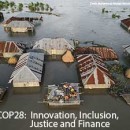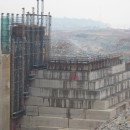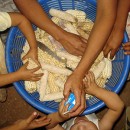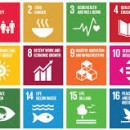Languages
Thursday, April 25, 2024
News and Views from the Global South
Disaster Management

Caribbean Rolls Out Plans to Reduce Climate Change Hazards
Climate change remains inextricably linked to the challenges of disaster risk reduction (DRR). And according to the head of the United Nations Office for Disaster Risk Reduction (UNISDR), Robert Glasser, the reduction of greenhouse gases is “the single most urgent global disaster risk treatment”.
FEATURED VIDEO: Searching for Solutions to Disaster Risk Management

Local Solutions to Rebuild Oldest Cuban City in Hurricane Matthew’s Wake
Clearings with fallen trees in the surrounding forests, houses still covered with tarpaulins and workers repairing the damage on the steep La Farola highway are lingering evidence of the impact of Hurricane Matthew four months ago, in the first city built by the Spanish conquistadors in Cuba.
Water Bodies Central to Urban Flood Planning
“The rain was our nemesis as well as our saviour,” says Kanniappan, recalling the first week of December 2015 when Chennai was flooded.
Nations Most at Risk have Least Familiarity with Term “Climate Change”
Although four in 10 adults have never heard the phrase “climate change,” many are aware that something is amiss with local weather patterns, a new survey covering 119 countries has found.
New Approaches to Managing Disaster Focus on Resilience
Natural disasters have become a fact of life for millions around the world, and the future forecast is only getting worse.
UNDP Unveils Blueprint for Swift, Unified Crisis Response
The United Nations Development Programme (UNDP) has announced a new 10-year global plan to support country efforts to reduce the risk of disasters that kill people and destroy livelihoods. The plan was unveiled at the Third World Conference on Disaster Risk Reduction which ended on Mar. 18.
Sri Lanka Still in Search of a Comprehensive Disaster Management Plan
About six months after a massive tsunami slammed the island nation of Sri Lanka on Dec. 26, 2004, large plumes of smoke could be frequently seen snaking skywards from the beach near the village of Sainathimaruthu, just east of Kalmunai town, about 300 km from the capital, Colombo.
‘Cyclone College’ Raises Hopes, Dreams of India’s Vulnerable Fisherfolk
Ten years have now passed, but Raghu Raja, a 27-year-old fisherman from the coastal village of Nemmeli in southern India’s Kanchipuram district, still clearly remembers the day he escaped the tsunami.
Filipinos Take to the Streets One Year After Typhoon Haiyan
People covered their bodies with mud to protest against government ineptitude and abandonment; others lighted paper lanterns and candles and released white doves and balloons to remember the dead, offer thanks and pray for more strength to move on; while many trooped to a vast grave site with white crosses to lay flowers for those who died, and to cry one more time.
When Helping Hands Make a Disaster Worse
Relief work done by emergency responders during natural disasters may inadvertently exacerbate problems caused by climate change and lead to further disasters, recent reports suggest.
Floods Wash Away India’s MDG Progress
The northeastern Indian state of Assam is no stranger to devastating floods. Located just south of the eastern Himalayas, the lush, 30,000-square-km region comprises the Brahmaputra and Barak river valleys, and is accustomed to annual bouts of rain that swell the mighty rivers and spill over into villages and towns, inundating agricultural lands and washing homes, possessions and livestock away.
New Technology Boosts Fisherfolk Security
As the United Nations gears up to launch its newest set of poverty-reduction targets to replace the Millennium Development Goals (MDGs) in 2015, the words ‘sustainable development’ have been on the lips of policymakers the world over.Is the Sewol Tragedy South Korea’s Katrina?
In the weeks since the South Korean ferry Sewol sank—taking with it the lives of over 300 passengers, the vast majority of them high school students — the country continues to be wracked by a palpable mix of grief, guilt, and outrage.
Traditional Wisdom to the Rescue in Cyclone Season
May and November bring the most vicious cyclones to the Bay of Bengal rim countries in Southeast Asia.
Gender Counts in the Aftermath of Disaster
The rise in natural disasters in the Caribbean due to climate change has led to increased suffering for both men and women, much of it as a consequence of socially constructed roles based on gender, experts say.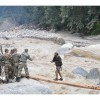
In the Land of the Gods, Disaster Response Falls Short of Divine
Over 580 bodies have so far been found. Hundreds more will likely never turn up. Survivors say they are suspended in a kind of nightmare, either haunted by memories of their brush with death or desperate for news of loved ones. At least 3,000 are reported to be missing.
In Sri Lanka, the Tempest Comes Unannounced
It was several hours before dawn when Afthas Niflal, a young fisherman in southern Sri Lanka, felt the sea start to rumble beneath him.
Stories Sprout like Warnings in Japan’s Tsunami Wasteland
As a survivor of Japan’s deadliest tsunami in living memory, Shun Ito dedicates his mornings to evoking stories of heroism that helped to save lives in this port town that was decimated on that fateful March afternoon two years ago.
Nepal Unprepared for Imminent Earthquakes
Nepal now ranks 11th on a list of the world’s most earthquake-prone countries, yet it remains one of the least disaster-prepared nations globally.
Women Take up Care of Tohoku Elders
Yumiko Yonekura, who survived last year’s massive earthquake and tsunami that devastated Tohoku in northeast Japan, has just launched ‘Hot Care Kesenuma’, a welfare company that provides special care for feeble elders in the affected region.Next Page »


